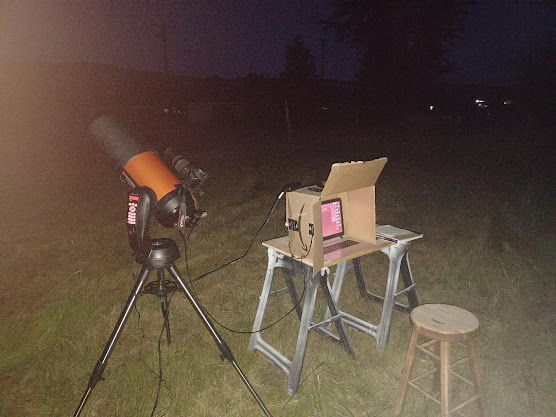Thoughts on Astrophotography

This bottom image is from my attempt at astrophotography back on August 14. It is one of 50 images taken with our Canon EOS Rebel T7 DSLR mounted piggyback on my Celestron Nexstar 8SE. These were 10 second exposures with a Canon EF75-300 zoom lens. I had it set at 300mm focal length, which gives an F number of 5.6. As I noted at the time that little fuzzy spot just above center is the Andromeda Galaxy, Messier 31 (M31). After taking the images, I attempted to process them using Siril , a free open source astronomical imaging tool. I attempted to follow the steps outlined in the You Tube video by SarahMaths Astro . She does an excellent job of explaining the basic process. However, when I tried to run the processing script, I found out that I had messed up in taking the calibration frames, which caused the processing script to fail. As the skies got cloudy with some fall weather, I revisited the processing. I looked at the additional pre-made scripts that had b...



